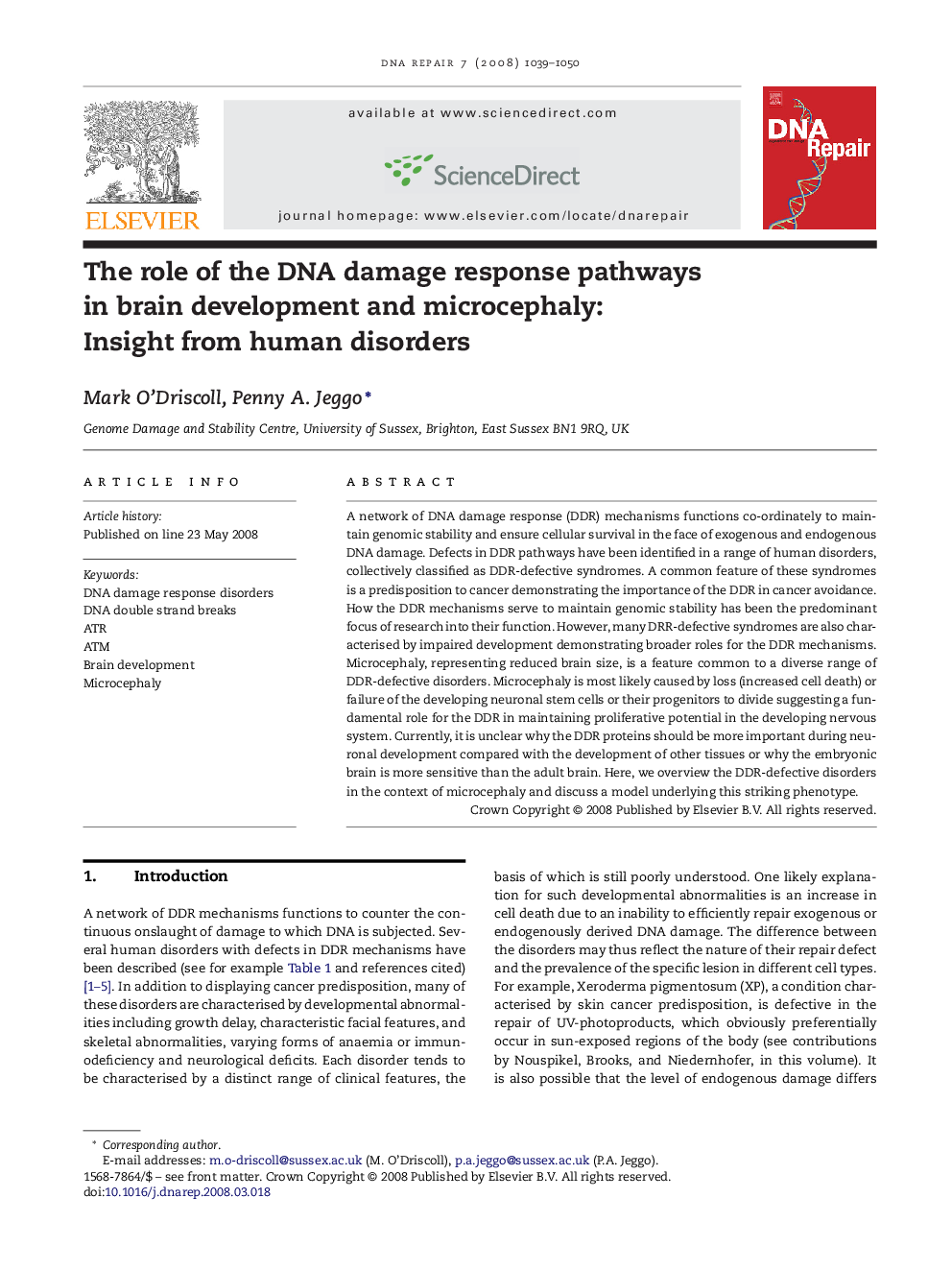| Article ID | Journal | Published Year | Pages | File Type |
|---|---|---|---|---|
| 1980815 | DNA Repair | 2008 | 12 Pages |
A network of DNA damage response (DDR) mechanisms functions co-ordinately to maintain genomic stability and ensure cellular survival in the face of exogenous and endogenous DNA damage. Defects in DDR pathways have been identified in a range of human disorders, collectively classified as DDR-defective syndromes. A common feature of these syndromes is a predisposition to cancer demonstrating the importance of the DDR in cancer avoidance. How the DDR mechanisms serve to maintain genomic stability has been the predominant focus of research into their function. However, many DRR-defective syndromes are also characterised by impaired development demonstrating broader roles for the DDR mechanisms. Microcephaly, representing reduced brain size, is a feature common to a diverse range of DDR-defective disorders. Microcephaly is most likely caused by loss (increased cell death) or failure of the developing neuronal stem cells or their progenitors to divide suggesting a fundamental role for the DDR in maintaining proliferative potential in the developing nervous system. Currently, it is unclear why the DDR proteins should be more important during neuronal development compared with the development of other tissues or why the embryonic brain is more sensitive than the adult brain. Here, we overview the DDR-defective disorders in the context of microcephaly and discuss a model underlying this striking phenotype.
